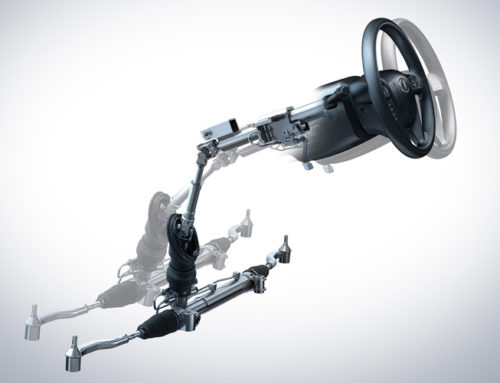The throttle body is a critical component in an internal combustion engine's air intake system. It plays a key role in regulating the amount of air that enters the engine, directly impacting the engine's performance, efficiency, and response. Understanding the function and significance of the throttle body can help vehicle owners and enthusiasts better appreciate this vital automotive part.
-
What Does a Throttle Body Do?
The throttle body is essentially a valve that controls airflow into the engine. Located between the air filter and the intake manifold, it opens and closes based on driver input via the accelerator pedal.
- When you press the accelerator, the throttle body opens wider, allowing more air to flow into the engine.
- When the pedal is released, the throttle body closes, reducing airflow.
The engine's electronic control unit (ECU) monitors the throttle position and adjusts fuel injection accordingly to maintain the optimal air-fuel mixture, ensuring efficient combustion.

Key Components of a Throttle Body
- Throttle Plate (Butterfly Valve): A rotating disc that opens and closes to regulate airflow.
- Throttle Position Sensor (TPS): Measures the position of the throttle plate and sends data to the ECU.
- Idle Air Control Valve (IAC): Manages airflow when the throttle is closed, maintaining a steady idle speed.
- Electronic Throttle Control (ETC): In modern vehicles, replaces the mechanical link between the accelerator and the throttle plate with electronic signals for better precision.
Types of Throttle Bodies
- Mechanical Throttle Body: Operated by a cable connecting the accelerator pedal to the throttle plate. Common in older vehicles.
- Electronic Throttle Body (ETB): Found in modern cars, it uses sensors and actuators for precise control and improved efficiency.
Why Is the Throttle Body Important?
The throttle body impacts several critical aspects of vehicle performance:
- Engine Performance: Regulates air intake to ensure the right air-fuel mixture for combustion.
- Fuel Efficiency: Helps optimize fuel consumption by controlling airflow accurately.
- Responsiveness: Determines how quickly the engine reacts to driver input.
- Emissions Control: Plays a role in reducing harmful emissions by maintaining combustion efficiency.
Signs of a Faulty Throttle Body
A malfunctioning throttle body can cause various performance issues. Common symptoms include:
- Rough idling or stalling.
- Poor acceleration or lack of power.
- Illuminated check engine light.
- Decreased fuel efficiency.
- Unusual sounds or vibrations from the engine.
If these issues arise, cleaning or replacing the throttle body may be necessary.
Conclusion
The throttle body is more than just a valve; it’s a gateway to efficient engine operation. Whether it's a mechanical or electronic design, its ability to regulate airflow directly influences how well your vehicle performs.
Regular maintenance, such as cleaning the throttle body, can prevent performance issues and extend the life of your engine. For more information or to explore high-quality throttle body solutions, feel free to reach out to us!
The Previous Articles:
What Is Rack and Pinion Bushing? How To Tell If Rack and Pinion Bushings Are Bad?
Why Steering Rack Makes Noise When Turning?
How To Rebuild A Steering Rack?
What Is A Rotary Valve Power Steering Rack?
Rack And Pinion System Vs Power Steering System: What Are The Differences?
Power Steering Rack Market Analysis Report (Japan Market)
What Causes Steering Rack to Go Bad?
Design Of Car Rack And Pinion Steering Racks
What Is The Intelligent Steering Rack Used By VW, Toyota, Honda And Renault?
Understanding Steering Angle Sensors: A Detailed Overview
Demystifying Power Steering Fluid: Understanding Its Role in Steering Systems
Understanding Steering Angle Sensors: A Detailed Overview
Demystifying Power Steering Fluid: Understanding Its Role in Steering Systems
What is steering rack repair kit?
What is power steering reservoirs?
Understanding the Severity of Rack and Pinion Leaks in Your Vehicle
How to Find a Reliable Supplier of Steering Rack in China? Why You Should Choose Us?
What Is a Steering Rack Belt: Exploring the Role of Electric Steering Rack Belts
What Causes Drive Shaft Failure?
Steering Rack: When Should You Replace It?
Is Steering Rack Expensive to Fix? Exploring Steering Rack Repair and Costs
Demystifying the Difference Between Steering Rack and Steering Column
What is steering rack repair kit?
What is power steering reservoirs?
Understanding the Severity of Rack and Pinion Leaks in Your Vehicle
How to Find a Reliable Supplier of Steering Rack in China? Why You Should Choose Us?
What Is a Steering Rack Belt: Exploring the Role of Electric Steering Rack Belts
What Causes Drive Shaft Failure?
Steering Rack: When Should You Replace It?
Is Steering Rack Expensive to Fix? Exploring Steering Rack Repair and Costs
Demystifying the Difference Between Steering Rack and Steering Column







Leave A Comment